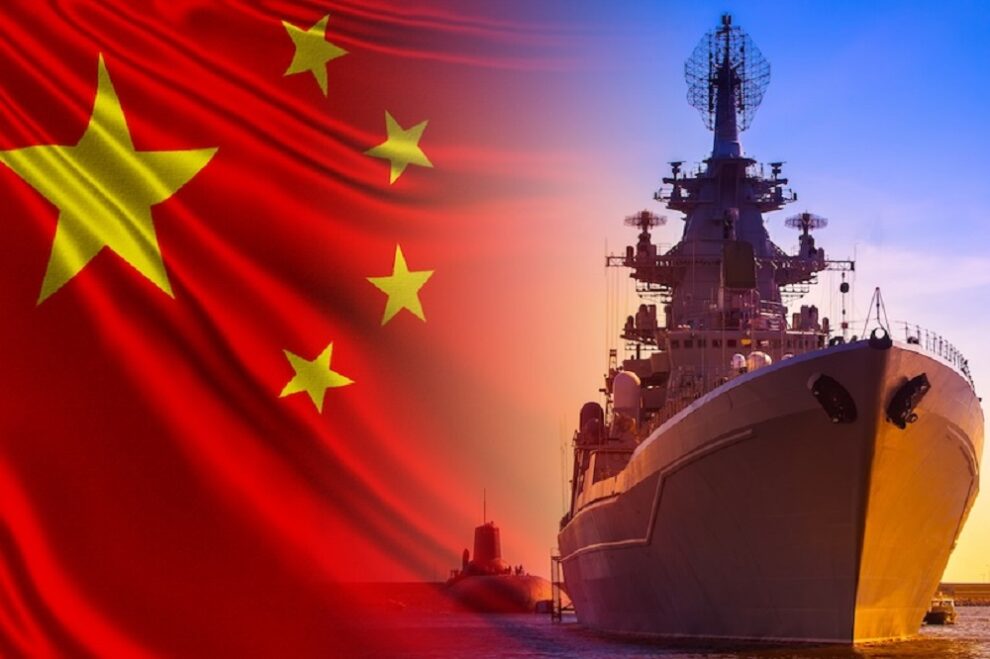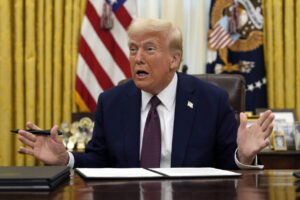Chinese President Xi Jinping, soon after he took power, announced a drastic military reform program, modernizing weapons and technology and improving the People’s Liberation Army (PLA)’s organization, training, and preparedness. The goal is to “basically complete the modernization of national defense and the military by 2035 and to fully transform the people’s armed forces into world-class forces by the mid-21st century.” As part of the modernization plan to advance combat readiness and preparedness, the PLA has intensified and increased its military exercises. Beijing uses military exercises for a wide variety of reasons, from military training purposes (improving quality of military performances and testing new weapons) to political and strategic ends. However, the politico-strategic dimensions of Chinese military exercises are frequently overlooked, which can have far-reaching consequences for regional and global security.
China’s military exercises near Taiwan
China is employing military exercises as a tool to demonstrate its military might and signal its willingness and ability to “reunify” Taiwan. The use of military exercises by China to intimidate Taiwan through displays of military prowess is not a new phenomenon. Such exercises often serve as a scare tactic to remind Taiwan of the potential consequences of drawing closer to the United States. “Those who play with fire will perish by it,” Xi Jinping warned during a telephone conversation with U.S. President Joe Biden last year. Such warnings often emphasize China’s determination to oppose any actions that could be interpreted as supporting Taiwanese independence as well as threatening China’s security.
The degree to which China perceives a certain action by the United States or Taiwan to be threatening can be inferred by the types of weapons employed in the military drills. The PLA has conducted a live-fire drill, simulating strikes against Taiwan with the deployment of an aircraft carrier, long-range rockets, vessels, fighter jets, and conventional missiles in response to Taiwanese President Tsai Ing-wen’s meeting with U.S. House Speaker Kevin McCarthy. Moreover, in the summer of 2022, following then-U.S. House Speaker Nancy Pelosi’s visit to Taipei, the PLA carried out a series of live-fire military drills, including the firing of the hypersonic DF-17 missile, also known as an “aircraft carrier killer.” This was the first time the PLA had fired conventional missiles into the waters around Taiwan since the 1996 Taiwan Strait Crisis. China’s signaling with military exercises has become increasingly threatening, with the deployment of advanced weapons and equipment such as aircraft carriers and missile systems.
Furthermore, China has increased the frequency of military exercises conducted around Taiwan. Despite the COVID-19 pandemic, the PLA held more than 100 sea drills in the Bohai Sea, the Yellow Sea, the East China Sea, the Taiwan Strait, and the South China Sea in just three months, in the summer of 2021, according to the Global Times. Beijing appears to use repeated military exercises around Taiwan as an instrument to deter U.S. actions with the pressure of imminent war. Large-scale exercises are viewed as “an important way to implement strategic deterrence” in China’s military strategy. The Science of Military Strategy, one of China’s key publications on military strategy and doctrines, underscores the role of military exercises in creating confusion and uncertainty. It asserts that such exercises “demonstrate the military’s combat capabilities to the opponent, cause the opponent to doubt China’s intentions, and cause psychological panic to produce a deterrent effect.”
Furthermore, in April, the People’s Liberation Army carried out a joint patrol with Vietnam in the Beibu Gulf, marking the inaugural meeting between the senior leaders from two countries’ maritime law enforcement agencies. China also held a joint maritime exercise with Singapore in late April. In late March and early April, the PLA carried out a joint military drill with Cambodia called Golden Dragon 2023. Cambodia is among the countries that have maintained historically strong relationships with China. Vice Admiral Wei Wenhui, the deputy commander of the PLA Southern Theater Command, highlighted that the China-Cambodia joint exercise served as crucial platform for exchanges, mutual learning and joint training between the two militaries. It also played a vital role in “achieving the expected purpose of consolidating the profound friendship and deepening security cooperation.”
Beijing generally uses military exercises for a wide variety of reasons: from military training purposes – improving the quality of military performances and combat readiness and preparedness, and testing new weapons – to broader foreign policy objectives. With tensions continuing to rise in the Taiwan Strait, Beijing’s primary objective is to make sure its neighbors are not aligned with the United States against China by reassuring them of its friendship through various diplomatic measures, including joint military exercises.
China’s joint military drills with Russia
Beijing and Moscow have been expanding their defense cooperation mainly through joint military exercises, alongside visits of high-level defense officials, arms trade and cooperation on military technology. In November 2021, Chinese defense minister Wei Fenghe and Russian counterpart Sergei Shoigu signed a “Roadmap for Military cooperation for 2021-2025” to guide the bilateral defense collaboration. The roadmap focused on increasing bilateral collaboration on “strategic military exercises and joint patrols.” As China pushes towards intensifying and increasing its military exercises with Russia, this raises the important question of what political-strategic objectives Beijing aims to accomplish through these drills with Moscow.
China uses the military exercises as a means of reassuring Russia of its friendship. China has participated in a number of Russia’s annual military exercises, including Vostok-2018, Tsentr-2019, Kavkaz-2020, Zapad-2021 and Vostok-2022. Additionally, the two nations have been co-organizing joint naval drills since 2012, and had conducted joint counterterrorism exercises known as “cooperation” in 2007, 2013, 2016, 2017 and 2019. Over the years, there has been a significant increase in the frequency and scale of these joint exercises.
China hosted the Zapad-2021 in the Ningxia Hui Autonomous Region, marking the first time that it hosted Russia’s annual military exercise on its territory. To emphasize the importance of this joint exercise, the Chinese state-run Global times said it was “to consolidate the comprehensive strategic partnership in a new era between China and Russia, and deepen the pragmatic cooperation and traditional friendship between the two militaries.”
Moscow recently pledged its support for China on the “Taiwan issue” in a joint statement released after a meeting in March between Chinese President Xi Jinping and Russian President Vladimir Putin. The statement affirmed Moscow’s recognition of Taiwan as an inseparable part of the People’s Republic of China, its opposition to any form of Taiwanese independence, and its firm backing of China’s actions to safeguard its state sovereignty and territorial integrity. With tensions continuing to rise in the Taiwan Strait, Beijing will likely seek to tighten its military ties with Moscow. Joint military exercises could provide an important mechanism to facilitate military collaboration and deepen pragmatic cooperation between the two militaries, especially as the two nations do not have an official military alliance.
Beijing employs joint military drills with Russia as a tool to send a political message to the US and its major allies in the region close to China’s borders. By showcasing its close ties and military cooperation with Russia, China aims to discourage any actions that could undermine its interests or pose a threat to its territorial integrity, particularly concerning Taiwan. From China’s perspective, the joint drills function as a means of deterrence. Assuming that China intends to invade Taiwan in the near future, a crucial step would be to dissuade key US allies, such as Japan and South Korea, from becoming involved in the conflict by signaling that a confrontation with Beijing would carry significant costs. An effective way to achieve this could be through joint military drills, and air and naval patrols with Russia, supposedly to demonstrate Russian support.
China and Russia conducted joint aerial strategic patrols over the Sea of Japan and the East China sea on June 6, 2023. It was their sixth joint air patrol since 2019, and their increasing frequency reflects the growing level of collaboration between the two nations. Last year, the Chinese and Russian militaries held two joint air patrols over the Sea of Japan, the East China Sea and the West Pacific. In May last year, the two nations sent strategic bombers near Japan when the leaders of the Quadrilateral Security Dialogue, or Quad, met in Tokyo. This was followed in November last year by the Chinese People’s Liberation Army sending H-6K strategic bombers and the Russian Aerospace Forces sending Tu-95MS strategic missile carriers, escorted by Moscow’s Su-30 SM and Su-35S jets, close to Japan and South Korea. Chinese and Russian bombers crossed South Korea’s air defense identification zone, intimidating one of the US’ most important allies in the region.
Although Russia and China are drawing closer, it is highly unlikely that Russia would directly engage in any conflict related to Taiwan. However, through joint military exercises, Beijing can sow confusion among the US’ allies in the region, conveying the message that Russia and China stand united in the face of regional challenges. Thus, this approach is akin to an “empty city” tactic, which suggests that even if Russia is not backing China, the perception can be created that it is. Overall, although Moscow and Beijing do not have an official military alliance, China uses the exercises to reassure its most important strategic partner, Russia, while at the same time intimidating its regional opponents in times of rising tensions in the Taiwan Strait.
Source : E-International Relation










